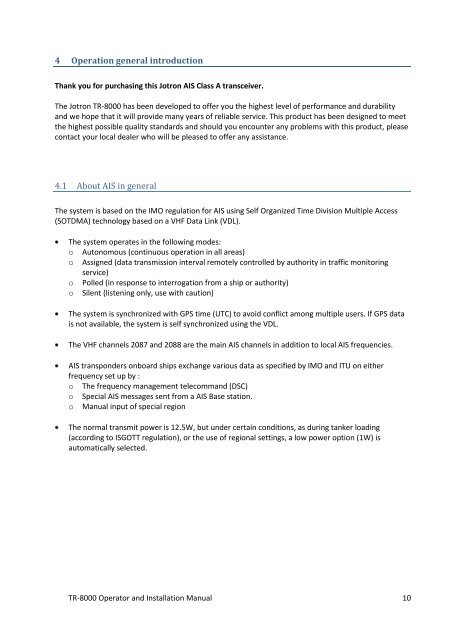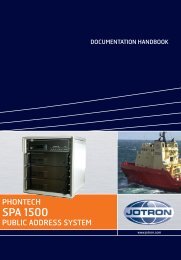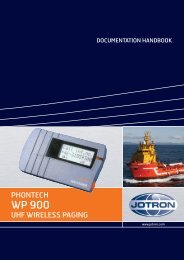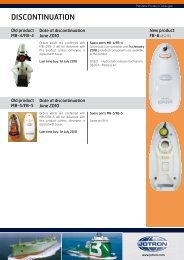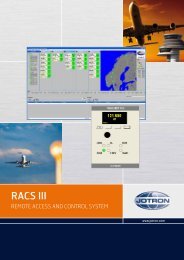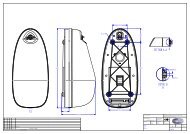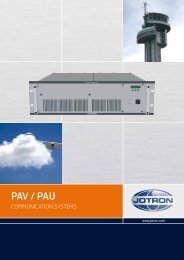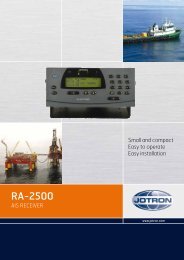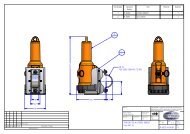Operator and Installation Manual Tron AIS TR-8000.pdf - Jotron
Operator and Installation Manual Tron AIS TR-8000.pdf - Jotron
Operator and Installation Manual Tron AIS TR-8000.pdf - Jotron
You also want an ePaper? Increase the reach of your titles
YUMPU automatically turns print PDFs into web optimized ePapers that Google loves.
4 Operation general introduction<br />
Thank you for purchasing this <strong>Jotron</strong> <strong>AIS</strong> Class A transceiver.<br />
The <strong>Jotron</strong> <strong>TR</strong>-8000 has been developed to offer you the highest level of performance <strong>and</strong> durability<br />
<strong>and</strong> we hope that it will provide many years of reliable service. This product has been designed to meet<br />
the highest possible quality st<strong>and</strong>ards <strong>and</strong> should you encounter any problems with this product, please<br />
contact your local dealer who will be pleased to offer any assistance.<br />
4.1 About <strong>AIS</strong> in general<br />
The system is based on the IMO regulation for <strong>AIS</strong> using Self Organized Time Division Multiple Access<br />
(SOTDMA) technology based on a VHF Data Link (VDL).<br />
The system operates in the following modes:<br />
o Autonomous (continuous operation in all areas)<br />
o Assigned (data transmission interval remotely controlled by authority in traffic monitoring<br />
service)<br />
o Polled (in response to interrogation from a ship or authority)<br />
o Silent (listening only, use with caution)<br />
The system is synchronized with GPS time (UTC) to avoid conflict among multiple users. If GPS data<br />
is not available, the system is self synchronized using the VDL.<br />
The VHF channels 2087 <strong>and</strong> 2088 are the main <strong>AIS</strong> channels in addition to local <strong>AIS</strong> frequencies.<br />
<strong>AIS</strong> transponders onboard ships exchange various data as specified by IMO <strong>and</strong> ITU on either<br />
frequency set up by :<br />
o The frequency management telecomm<strong>and</strong> (DSC)<br />
o Special <strong>AIS</strong> messages sent from a <strong>AIS</strong> Base station.<br />
o <strong>Manual</strong> input of special region<br />
The normal transmit power is 12.5W, but under certain conditions, as during tanker loading<br />
(according to ISGOTT regulation), or the use of regional settings, a low power option (1W) is<br />
automatically selected.<br />
<strong>TR</strong>-8000 <strong>Operator</strong> <strong>and</strong> <strong>Installation</strong> <strong>Manual</strong> 10


